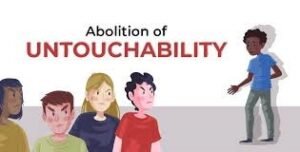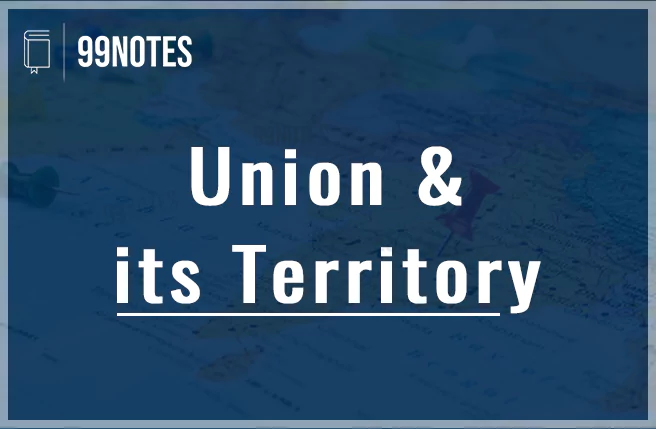LEGAL & INSTITUTIONAL PROTECTION FOR SC/ST, OBC
- Need for Affirmative Action and Inclusive Governance
- Constitutional Provisions for SC/ST & OBCs
- Major Laws for Protection
- Institutional Mechanisms for Protection of SCs, STs, and OBCs
- Government Schemes and Initiatives
- Challenges in Legal and Institutional Protection
- Role of Civil Society and Judiciary
- Way Forward
- Related FAQs of LEGAL & INSTITUTIONAL PROTECTION FOR SC/ST, OBC
These provisions are not just welfare tools, but instruments of social justice aimed at addressing historical wrongs. They strengthen democratic ideals by upholding equality, participation, and dignity for the marginalized, in line with the constitutional vision of an inclusive India.
Historical Marginalization and Social Exclusion
SCs, STs, and OBCs in India have historically faced systemic discrimination rooted in the caste system and feudal socio-economic structures. Caste-based hierarchies denied them access to education, land, temples, public spaces, and dignified occupations, leading to centuries of oppression and inequality.
Scheduled Castes (Dalits) were subjected to untouchability, forced labor, and social ostracism, while Scheduled Tribes remained geographically and culturally isolated, deprived of basic services and excluded from mainstream development. OBCs, though relatively better off, still faced educational and economic backwardness due to historical neglect.
This exclusion created deep social and economic disparities that persisted even after independence, making affirmative action and targeted policies essential for inclusive growth and social justice. The legacy of historical marginalization still reflects in intergenerational poverty, lack of representation, and continued social stigma faced by these communities.
Need for Affirmative Action and Inclusive Governance
India’s social fabric has long been shaped by deep-rooted caste hierarchies, resulting in the systemic marginalization of Scheduled Castes (SCs), Scheduled Tribes (STs), and Other Backward Classes (OBCs). To correct historical injustices and ensure equitable access to opportunities, the state has adopted affirmative action as a constitutional and moral imperative. Inclusive governance further complements this by integrating the voices of these communities into policymaking and implementation processes, ensuring justice, dignity, and equal participation in nation-building.
- Reservation in Education and Employment – Constitutionally mandated quotas ensure SCs, STs, and OBCs gain access to institutions of learning and public sector jobs, addressing generational disadvantages.
- Political Representation – Reserved constituencies in Panchayati Raj Institutions, State Assemblies, and Parliament guarantee participation in legislative decision-making and local governance.
- Targeted Welfare Schemes – Special schemes like Post-Matric Scholarships, SC/ST Hostels, and Vanbandhu Kalyan Yojana empower marginalized communities economically and socially.
- Legal Safeguards Against Discrimination – Acts like the SC/ST (Prevention of Atrocities) Act and special courts deter caste-based violence and ensure justice delivery.
- Institutional Mechanisms – Bodies like the National Commissions for SCs, STs, and OBCs monitor implementation, investigate grievances, and advise governments.
- Participatory Governance Initiatives – Inclusion in Gram Sabhas, community-based monitoring, and social audits promote transparency, accountability, and grassroots empowerment.
Constitutional Provisions for SC/ST & OBCs
The Indian Constitution lays a strong foundation for the empowerment and protection of Scheduled Castes (SCs), Scheduled Tribes (STs), and Other Backward Classes (OBCs). These provisions aim to eliminate discrimination, ensure equal opportunities, and promote social justice through reservations, protective laws, and directive principles.
- Article 15(4) & 15(5) – Allow the state to make special provisions for the advancement of socially and educationally backward classes, including SCs and STs, especially in education and admissions.
- Article 16(4) – Enables reservation in public employment for backward classes not adequately represented in government services, forming the basis for job reservations for SCs, STs, and OBCs.

- Article 17 – Abolishes “untouchability” and makes its practice in any form a punishable offence, laying the moral and legal foundation for anti-discrimination laws.
- Article 46 – A Directive Principle that urges the state to promote educational and economic interests of SCs, STs, and OBCs and to protect them from social injustice and exploitation.
- Article 330 & 332 – Provide for reservation of seats for SCs and STs in the Lok Sabha and State Legislative Assemblies to ensure their political representation.
- Article 338 & 338-A – Establish the National Commission for Scheduled Castes and National Commission for Scheduled Tribes respectively, mandated to investigate complaints and monitor safeguards for SCs and STs.
- Article 340 – Empowers the President to appoint a commission to investigate the conditions of socially and educationally backward classes and recommend steps for their advancement (e.g., Mandal Commission).
These constitutional provisions collectively aim to dismantle caste-based inequality, promote inclusive development, and ensure full participation of marginalized communities in all spheres of national life.
Major Laws for Protection
To ensure justice, dignity, and equality for historically marginalized communities like SCs, STs, and OBCs, several key legislations have been enacted in India. These laws aim to prevent discrimination, ensure representation, and protect their social and economic rights. Here’s a brief overview:
- Scheduled Castes and Scheduled Tribes (Prevention of Atrocities) Act, 1989 – A landmark legislation that criminalizes caste-based atrocities, including violence, humiliation, and denial of access to public spaces. It provides for special courts, stringent punishment, and relief measures for victims.
- Protection of Civil Rights Act, 1955 – One of the earliest anti-discrimination laws in independent India, it prohibits the practice of untouchability and enforces equal access to public places, services, and temples.
- Forest Rights Act, 2006 – Recognizes the rights of STs and traditional forest dwellers over forest land and resources. It empowers them through individual and community forest rights, correcting historical injustices linked to displacement.

- SC/ST (Prevention of Atrocities) Amendment Acts, 2015 & 2018 – These amendments expanded the scope of atrocities covered, removed the requirement for prior approval before arresting a public servant, and ensured time-bound trials and relief.
- Mandal Commission Report (1980) & Legal Basis for OBC Reservations – Recommended 27% reservation for OBCs in central government jobs and educational institutions. Its implementation in 1990 marked a major step in affirmative action for backward classes.
- Creamy Layer Concept for OBCs – Introduced by the Supreme Court in Indra Sawhney v. Union of India (1992), this excludes the more affluent among OBCs from reservation benefits to ensure they reach the genuinely disadvantaged sections.
Institutional Mechanisms for Protection of SCs, STs, and OBCs
To ensure the protection, welfare, and development of marginalized communities like SCs, STs, and OBCs, several institutional mechanisms have been established. These bodies not only monitor safeguards but also aid in policymaking, grievance redressal, and program implementation at central, state, and district levels.
- Ministry of Social Justice and Empowerment – It is the nodal ministry for SCs and OBCs. It formulates and implements schemes like pre/post-matric scholarships, socio-economic rehabilitation, and programs for manual scavengers and senior citizens from these communities.
- Ministry of Tribal Affairs – Dedicated solely to ST welfare, this ministry handles schemes related to tribal education, livelihood, and rights over land and forests. It plays a key role in implementing the Forest Rights Act and Van Dhan Yojana.
- National Commission for Scheduled Castes (NCSC) – A constitutional body under Article 338, it investigates complaints regarding rights violations, monitors the implementation of safeguards, and submits reports to the President for necessary action.
- National Commission for Scheduled Tribes (NCST) – Established under Article 338A, NCST safeguards tribal interests related to land alienation, displacement, forest rights, and access to education and healthcare in tribal areas.
- National Commission for Backward Classes (NCBC) – Granted constitutional status under the 102nd Amendment Act, 2018, it advises the government on the inclusion/exclusion of castes in the OBC list and evaluates welfare measures for backward classes.
- State Commissions for SCs/STs/OBCs – These are statutory bodies established by respective state governments. They address local grievances, ensure policy implementation, and work closely with communities for empowerment at the grassroots level.
- District-level Vigilance and Monitoring Committees – Headed by the District Magistrate or MP, these committees ensure effective implementation of the SC/ST (Prevention of Atrocities) Act, monitor atrocity cases, and promote legal awareness at the district level.
Government Schemes and Initiatives
To address socio-economic disparities and promote inclusive development, the government has launched a range of schemes targeted at the upliftment of Scheduled Castes (SCs), Scheduled Tribes (STs), and Other Backward Classes (OBCs). These schemes aim to provide educational opportunities, entrepreneurship support, and community development.
- Post-Matric Scholarship Schemes – These scholarships support SC/ST/OBC students pursuing education beyond Class 10. They cover tuition, maintenance, and other expenses to reduce dropouts and promote higher education among marginalized groups.
- Pre-Matric Scholarships for SC/ST/OBC students – Aimed at reducing school-level dropouts, these scholarships provide financial assistance to students from Class 1 to 10, encouraging early education among disadvantaged communities.

- Stand-Up India and Venture Capital Fund for SCs/STs – These initiatives promote entrepreneurship among SC/STs by facilitating bank loans (₹10 lakh to ₹1 crore) and providing venture capital for scalable business models by Dalit and tribal entrepreneurs.
- Pradhan Mantri Adarsh Gram Yojana – This scheme focuses on the integrated development of villages with over 50% SC population. It aims to provide basic services and infrastructure to transform them into model villages.
- Development of Particularly Vulnerable Tribal Groups (PVTGs) – Special funds and strategies are directed towards the welfare of PVTGs, addressing their health, housing, education, and livelihood challenges through targeted and flexible approaches.
- Special Central Assistance to SCSP and TSP – These funds ensure targeted development expenditures for SCs and STs in sectors like education, health, housing, and livelihoods, allowing state and central schemes to prioritize these groups.
- Eklavya Model Residential Schools (EMRS) – These are quality residential schools for tribal children from Class 6 to 12, aiming to provide high-standard education with cultural sensitivity and support for competitive exams.
Challenges in Legal and Institutional Protection
Despite constitutional safeguards and targeted schemes, several challenges continue to hinder the realization of social justice and equality for SCs, STs, and OBCs. These challenges are legal, structural, administrative, and social in nature.
- Implementation Gaps – Many laws and schemes remain poorly implemented due to bureaucratic apathy, lack of awareness among beneficiaries, and inadequate monitoring mechanisms at the grassroots level.
- Underreporting of Atrocities – Fear of social backlash, weak legal support, and systemic discrimination often result in underreporting of crimes against Dalits and tribals, limiting justice and deterrence.
- Judicial Delays and Low Conviction Rates – Even when cases are filed under the SC/ST (Prevention of Atrocities) Act, long delays and low conviction rates dilute the protective intent of the legislation.
- Political and Bureaucratic Apathy – Often, political will to address deep-seated caste discrimination is lacking. Bureaucrats handling welfare schemes may not be sensitized to caste realities, affecting outcomes.
- Tokenism and Symbolic Measures – Some government actions are limited to symbolism rather than transformative change. Celebrating icons without structural reforms does not address systemic issues.
- Exclusion within Marginalized Groups – Among SCs, STs, and OBCs, certain sub-groups remain relatively more disadvantaged. Women, PVTGs, and Denotified Tribes face intersecting layers of exclusion and are often left behind.
- Caste Bias in Society and Institutions – Discrimination continues in educational institutions, workplaces, and governance systems, reflecting the deep-rooted caste hierarchy despite formal legal protections.
Role of Civil Society and Judiciary
The civil society and judiciary have been pivotal in advancing social justice for Scheduled Castes (SCs), Scheduled Tribes (STs), and Other Backward Classes (OBCs). Together, they act as watchdogs, advocates, and interpreters of rights, ensuring that constitutional promises translate into ground-level empowerment.
- Legal Activism and PILs by Civil Society – NGOs and rights-based organizations have used Public Interest Litigations (PILs) to challenge discrimination, demand effective implementation of reservations, and push for stricter action against atrocities. Landmark interventions have helped shape progressive interpretations of law.
- Awareness and Legal Literacy Campaigns – Civil society groups conduct outreach programs to spread awareness about legal protections, such as the SC/ST Atrocities Act, and help marginalized groups access justice through paralegal training and legal aid.
- Judicial Interpretation and Progressive Judgments – The judiciary has played a transformative role by interpreting affirmative action as essential for substantive equality. Judgments like Indra Sawhney vs Union of India (1992) upheld OBC reservations, while others have expanded the scope of protective legislation.
- Checks on Executive Apathy – Through judicial review, courts have intervened when governments failed to implement welfare provisions or acted in violation of reservation norms, thus holding the executive accountable to constitutional mandates.
- Balancing Rights and Accountability – While upholding the rights of SCs/STs/OBCs, courts have also ensured due process and protection against misuse. For example, Subhash Kashinath Mahajan v. State of Maharashtra (2018) brought procedural safeguards in Atrocities Act cases, later balanced by legislative amendments.
- Civil Society as Bridge-Builders – Beyond litigation, civil society builds trust between communities and institutions by facilitating dialogue, mediation in caste-related conflicts, and supporting grassroots leadership development among marginalized groups.
- Campaigns for Reforms and Representation – Movements led by civil society—like Dalit rights forums and tribal advocacy networks—push for political representation, land rights, and equitable access to education and employment.
These actors collectively reinforce democratic values and ensure that social justice does not remain confined to constitutional text but becomes a lived reality for marginalized communities.
Way Forward
To ensure true social justice and inclusive development, the legal and institutional framework for marginalized communities must evolve with changing times. The focus should shift from mere compliance to empowerment and dignity.
- Strengthening Implementation Mechanisms: Laws and schemes need robust implementation at grassroots levels through better monitoring, trained officials, and community participation to avoid tokenism.
- Bridging Gaps in Awareness and Accessibility: Awareness campaigns in regional languages and tech-based grievance redressal platforms should be promoted so that marginalized communities can access their rights effectively.
- Data-Driven Policy Making: Regular caste-based socio-economic surveys and disaggregated data collection can help identify exclusion pockets and redesign interventions for better impact.
- Empowering Local Institutions: Panchayats and local bodies must be equipped and sensitized to support marginalized groups through representation, grievance handling, and local-level planning.
- Strengthening Role of Civil Society: Partnerships with NGOs, grassroots movements, and academic institutions can help monitor rights violations, build capacity, and drive innovation in welfare delivery.
- Inclusive Education and Employment Policies: Reservations must be complemented with quality education, skilling, mentoring, and affirmative private-sector policies to build sustainable upward mobility.
- Balancing Equity with Social Harmony: Affirmative action should be framed with sensitivity to broader social dynamics, avoiding backlash and promoting national unity through inclusive narratives.
By adopting a rights-based, community-driven, and data-backed approach, India can uphold its constitutional promise of equality, dignity, and social justice for all.
conclusion
Despite constitutional guarantees and progressive legislation, the journey toward social justice for SCs, STs, and OBCs remains incomplete. Legal safeguards such as the SC/ST (Prevention of Atrocities) Act and provisions for reservation in education, employment, and political representation have empowered these communities, yet implementation gaps, societal prejudices, and institutional apathy persist.
Strengthening legal mechanisms with greater accountability, ensuring responsive institutions like the National Commissions, and promoting socio-economic empowerment through affirmative action are essential for realizing the constitutional vision of equality, dignity, and inclusive development. True justice lies not just in protection but in active promotion of equity.
Related FAQs of LEGAL & INSTITUTIONAL PROTECTION FOR SC/ST, OBC
Legal and institutional protection is essential because SCs, STs, and OBCs have historically faced social exclusion, discrimination, and economic deprivation due to the caste system. These safeguards aim to correct historical injustices, ensure dignity, protect rights, and promote equal access to opportunities in education, employment, and governance.
Key constitutional provisions include Article 15(4) & 16(4) (reservations in education and jobs), Article 17 (abolition of untouchability), Article 330 & 332 (political reservations), Article 338 & 338A (National Commissions for SCs & STs), and Article 340 (Commission for OBCs). These provide a strong framework for affirmative action and social justice.
The SC/ST (Prevention of Atrocities) Act, 1989, is a powerful law that criminalizes caste-based atrocities like violence, humiliation, and social boycott against SCs and STs. It ensures justice through special courts, strict punishment, and relief for victims. It acts as a vital legal tool to deter caste-based discrimination and violence.
Major schemes include Post-Matric and Pre-Matric Scholarships, Stand-Up India (for entrepreneurship), Pradhan Mantri Adarsh Gram Yojana (model villages for SCs), Eklavya Model Residential Schools (for tribal students), and special livelihood programs for Particularly Vulnerable Tribal Groups (PVTGs). These schemes target education, skill development, entrepreneurship, and socio-economic upliftment.
Key challenges include poor implementation of laws, underreporting of atrocities, judicial delays, exclusion within marginalized groups, low awareness of rights, and persistent caste-based discrimination in society. Addressing these requires better enforcement, legal literacy, sensitization of officials, and community empowerment for long-term social transformation.







